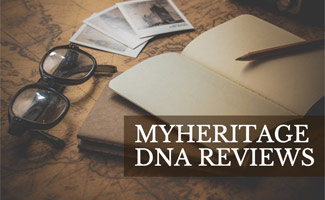National Geographic’s Genographic DNA Test Project (2005 – 2019)

Want to time travel back to ancient times? If only! Perhaps the next best thing is taking a DNA test. National Geographic’s Genographic Project was an ambitious attempt to help answer fundamental questions about where we came from and how we came to populate the earth. nearly a million people have participated, from more than 140 countries.
The Genographic Project was the world’s largest survey of its kind in the field of anthropological genetics, increasing the sample size by several orders of magnitude. Driven by an ethical framework and locally accountable review boards and protocols, the resulting data helped to map world migratory patterns dating back some 150,000 years and to fill in the gaps in our knowledge of humankind’s migratory history.
Key Features
- Nat Geo Geno 2.0 Next Generation allowed you to trace your roots back hundreds or thousands of years and gives you your ancestors’ ancient migration patterns across countries and continents around the globe
- Part of the National Geographic Genographic Project, a scientific effort to analyze historic patterns in human DNA across the globe
- The test identified thousands of mtDNA markers for direct maternal lineage, examines Y-DNA markers for direct paternal ancestry and analyzed more than 750,000 other ancestry-informative markers to reveal your ancestry’s regional affiliations
- Samples were processed at the Genomics Research Center, which is operated by Gene by Gene, Ltd., Family Tree DNA’s parent company.
Pricing
(This is historical pricing, the project has completed and the product is no longer available as of May, 2019).
The DNA testing kit cost $99.95 (saliva sample), was offered with free shipping, and results were generally available within 8-10 weeks.
A Personal Experience
Neil G. was chosen to participate in the NatGeo Geno 2.0 project. Read below to learn about his experience with this DNA test.
Getting And Taking The Test
I was very excited to be offered the chance to have my DNA tested with the NatGeo Geno 2.0 project for this review. I ordered the kit and received it only 4 days after ordering. The testing kit was well packaged, and the instructions were clear. I provided the saliva sample, which I will say is a little more saliva than I would have thought they’d need. Collecting the sample took a few minutes but at the end of the day, it wasn’t that difficult. I placed the tube of saliva inside the provided plastic bag and then into the postage-paid return box. I dropped the box off at my local post office. Five days later I checked the National Geographic website and found that my test had been received.
Once the 6 weeks were up, I began checking the National Geographic website regularly to see if my results were in. Unfortunately, about 2 weeks later I received an email from Helix (the testing company) that my results had “failed processing.” From their email to me:
Thank you for your purchase and recent DNA saliva sample submission to Helix. Helix strives for all samples to be processed quickly, providing high-quality data and results. In rare cases, a sample will fail during processing and require a new sample be submitted. Your sample has been identified within this group and a new sample will be required to continue with the sequencing process.
I’m a little disappointed. I was very careful to follow their instructions to the letter, so I’m not really sure what went wrong. In any case, a new kit is on the way at no charge to me. I’ll submit that sample and, once my results are in, I’ll report back on that experience.
DNA Test Results Are In
After submitting my second sample and waiting the required 6 weeks, I finally got my results. The Nat Geo 2.0 test did exactly what it purported to do. It traced my ancestors back tens of thousands of years. It was very interesting to explore how and when my ancestors migrated out of Africa and into Europe. I really enjoyed the way that National Geographic put this together in a page by page story for both my paternal and maternal lines.
Here are a couple of screenshots from my story to give you an idea of what to expect if you decide to test with NatGeo 2.0.

I also enjoyed discovering where my ancestors were from in the more “recent past.”
Here is a screenshot from my regional ancestry results. Please note that these results were limited to one page and are nowhere near as in-depth as the deep ancestry results above.

Overall, I really enjoyed my first DNA testing experience with National Geographic NatGeo 2.0. The results provided were much more in-depth than I thought they would be. It also makes me feel good to contribute to the human genome project, and help scientists understand more about human DNA. I would definitely recommend the NatGeo 2.0 test to those that are interested in learning more about their deep ancestry.
Unboxing Video
Check out Neil’s first-hand experience opening the test kit in this quick time-lapse video.
What Other DNA Tests Should I Consider?
The National Geographic Geno 2.0 test is best for people who want a deep dive into their ancient ancestors, but it does have its limitations. You won’t find out any health-related information or discover any relatives. By taking this test, however, you’re contributing to global scientific advancements in understanding the human race’s shared past. Check out our DNA test comparison to see reviews of other DNA tests you can take at home.





Hello I did this dna test in 2006 I think.
Thanks for sharing Michial! What did you think of the Nat Geo DNA test/how was your experience?